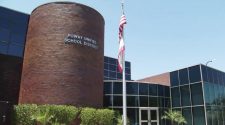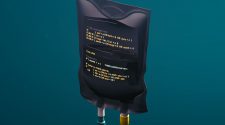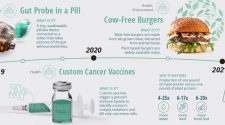At present, there are millions of people across the globe looking for heart transplants. But with a huge shortage of donor, most of these patients don't survive. Growing transplantable hearts in the laboratory is actually a quite old dream within the entire medical community and recently a study published in the journal namely Circulation Research has moved things one step closer to the reality. As mentioned in that study, a team of researchers has become successful in growing a beating human heart in the laboratory from the stem cells.
After that, two teams of scientists have published another study mentioning that it is actually possible to create the main elements of the human cardiovascular system from the pluripotent stem cells. This knowledge is not only important for reproducing the entire cardiovascular system, but also for transplantable and developing tissues to care for the patients with vascular or cardiovascular diseases.
Developing replacement tissues from the stem cells is one of the major goals of biology. In case any damaged part of the body can be restored by the tissue, which genetically matches to the patient, then there is less scope for rejection. So, far, growing the cardiovascular system from stem cells is one of the most complex decisions.
Developing capillaries by using 3D printers:
The scientists of both the Baylor College of Medicine and Rice University are taking the help of 3D printers for developing functioning capillaries. Capillaries are actually thin and tiny blood vessels, which transport blood to the veins from arteries and also make it possible the exchange of nutrients, oxygen and other waste materials between the tissues and blood.
As circulated in the Biomaterials Science journal, the scientists mainly discovered two materials, which coax the endothelial cells obtained from the human stem cell to build up into the formation like capillaries. The scientists also discovered that attaching mesenchymal stem cells to this procedure advanced the scope of the endothelial cells to create tube-like formations that resemble capillaries. Gisele Calderon, the lead author on that study explained the primary findings in the interview with Phys.org.
They also mentioned that these cells are capable of forming the capillary kind of structures both in the semi-synthetic material known as GelMA or gelatin methacrylate and in a natural material known as the fibrin.
Developing functioning arteries:
In another study issued in the PNAS journal, the scientists from the University of Wisconsin Madison and the Morgridge Institute mentioned that they are capable of generating purposeful arterial endothelial cells that line up the interior parts of the human arteries.
To do this, the team used a lab technique known as the single-call RNA ordering to find all the important factors of signaling, which coax the human pluripotent stem cells for developing into the arterial endothelial cells. After that, the scientists took the help of Cas9 / CRISPR gene editing technology for developing arterial "reporter cell lines" that lights up like the Christmas trees while candidate factors become successful to build up "reporter stem cells" to build up into the arterial endothelial cells.
By making use of this two-step theory, scientists managed to generate cells, which displayed most of the features and functions of the arterial endothelial cells available in the body. Additionally, while these cells were transplanted into mouse and has an illness heart attack, these cells aided to create new arteries while improving the rate of survival of that mice.
In the interview with Genetic Engineering & Biotechnology News, James Thompson- the senior author on the study explained the importance of their findings. As per him, the main goal of the team was to apply the improved process of cell derivation to form functional arteries, which can, therefore, be applied in cardiovascular surgery. This experiment works as an important proof the scientists have ultimately gotten a reliable resource for the functional arterial endothelial cells, which help the arteries to behave and perform like as the real thing.
















